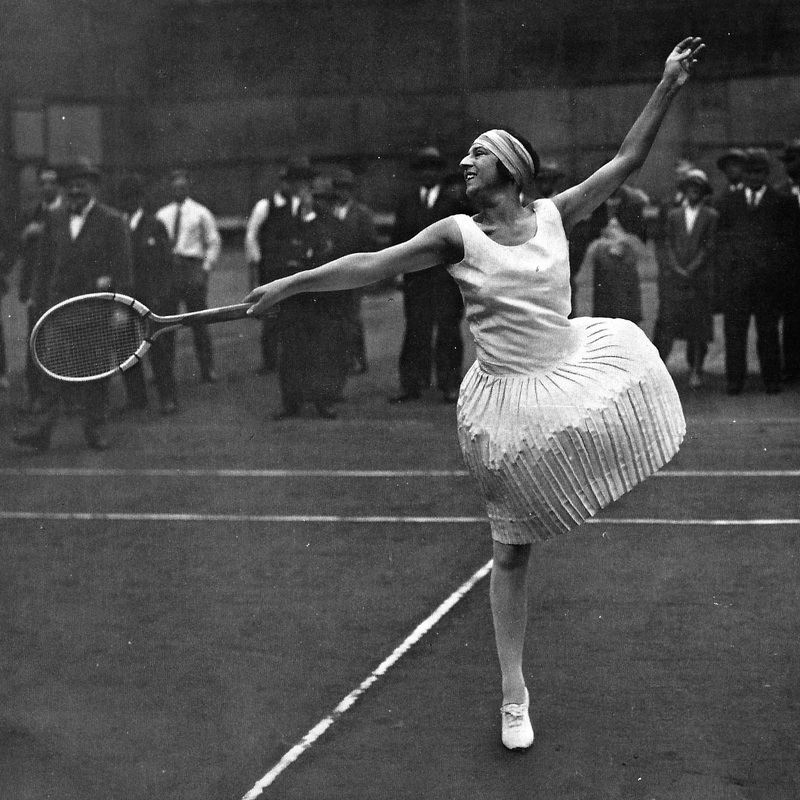 In this week's readings, Jaime Schultz (2014) examines the conferred meanings in the semi-ubiquitous hairstyle of choice for many sportswomen, the ponytail. Shultz (2014) makes the argument that the nature of social and institutional power can often be revealed by critically examining hegemonic social practices, in sum, the ones most of us take for granted. As we consider the gendered and classed practices that defined the dress of Victorian ladies, and Golden Era tennis stars such as Suzanne Lenglen and Helen Wills, let us consider what type of messages or ideas about gender and class construct our own workout clothing or even sports apparel. Upload a photo from a store (online or otherwise), a magazine, an advertisement, or some other repository of athletic gear. In less than 250 words, consider the financial cost of the aforementioned gear, what the clothing or gear connotes about the user, and consider the hegemonic or unspoken meaning derived from wearing or purchasing such apparel.
In this week's readings, Jaime Schultz (2014) examines the conferred meanings in the semi-ubiquitous hairstyle of choice for many sportswomen, the ponytail. Shultz (2014) makes the argument that the nature of social and institutional power can often be revealed by critically examining hegemonic social practices, in sum, the ones most of us take for granted. As we consider the gendered and classed practices that defined the dress of Victorian ladies, and Golden Era tennis stars such as Suzanne Lenglen and Helen Wills, let us consider what type of messages or ideas about gender and class construct our own workout clothing or even sports apparel. Upload a photo from a store (online or otherwise), a magazine, an advertisement, or some other repository of athletic gear. In less than 250 words, consider the financial cost of the aforementioned gear, what the clothing or gear connotes about the user, and consider the hegemonic or unspoken meaning derived from wearing or purchasing such apparel.  How is the business of modern-day athleisure wear similar or different to the tennis whites of days of yore? For instance, this Underarmour Big Logo Hooded Sweatshirt Polyester Realtree item will run you a pretty penny, and isn't likely something you'd wear in the field, right (maybe in a jonboat)? Underarmour as a brand has gained considerable consumer currency in the last decade, not only as a performance brand, but as a lifestyle brand. If you were to take on this piece in your blog, what meanings are we to infer about this piece of sportswear?
How is the business of modern-day athleisure wear similar or different to the tennis whites of days of yore? For instance, this Underarmour Big Logo Hooded Sweatshirt Polyester Realtree item will run you a pretty penny, and isn't likely something you'd wear in the field, right (maybe in a jonboat)? Underarmour as a brand has gained considerable consumer currency in the last decade, not only as a performance brand, but as a lifestyle brand. If you were to take on this piece in your blog, what meanings are we to infer about this piece of sportswear?  How is it different than this one from Adidas? I would argue that there are some pretty strong subcultural inferences or at least influences to be made about either jacket. How can two functionally similar items be so disparate in their meanings? Why Does one remind me of Carrie Underwood and the other Missy Elliot (but also Glee's Sue Sylvester), two very different cultural icons? Why can I not fathom Venus Williams or Michelle Wie wearing either of these (perhaps their incredibly large contracts with Reebok has something to do with that)? How do people pick up those meanings and reinterpret them when I wear one of these items? These are just some of the directions we're going to run as we explore meanings in adornment, the moving body, and individual sports and physical activities the next few weeks. If I were going to do my own homework, I'd consider the subcultural influences of each (rural sporting traditions, hip-hop), the mainstreaming process involving various media outlets, the role of retail sporting goods shops, and the way that clothing continues to signify, subvert, and blend various traditions that can play with notions of region, class, and race. #GotCapitalism?
How is it different than this one from Adidas? I would argue that there are some pretty strong subcultural inferences or at least influences to be made about either jacket. How can two functionally similar items be so disparate in their meanings? Why Does one remind me of Carrie Underwood and the other Missy Elliot (but also Glee's Sue Sylvester), two very different cultural icons? Why can I not fathom Venus Williams or Michelle Wie wearing either of these (perhaps their incredibly large contracts with Reebok has something to do with that)? How do people pick up those meanings and reinterpret them when I wear one of these items? These are just some of the directions we're going to run as we explore meanings in adornment, the moving body, and individual sports and physical activities the next few weeks. If I were going to do my own homework, I'd consider the subcultural influences of each (rural sporting traditions, hip-hop), the mainstreaming process involving various media outlets, the role of retail sporting goods shops, and the way that clothing continues to signify, subvert, and blend various traditions that can play with notions of region, class, and race. #GotCapitalism? J. Schultz. (2014). Qualifying times: points of change in US Women's Sport. Urbana: University of Illinois Press.
No comments:
Post a Comment